The electric cars they refuel through private charging infrastructures (wallboxes) and public ones such as charging stations. When it comes to EV electric vehicles we try to understand above all their autonomy, times and methods recharge. In fact, when you approach electric mobility you need to know that they are there different types of charging facilities with relatives powers, as well as different types of current and voltages. Below you will find the various types with an explanation of the difference between recharge B.C And A.Dand of several connectors/plugs for charging the electric car.
Let's analyze them types of charging columns and connectors.
How to recharge your electric car
The electric carsincreasingly numerous on the streets of European cities and also Italian ones, need to be refueled, or rather be connected to a power socket to recharge the battery.
The natural question arises as to how to recharge it? QHow many types and what are the ways to recharge an electric car? We have already explained how to recharge your electric car at home and the relative charging costin this article I will try to inform you about types of charging and on the different characteristics of electric car charging stations from the slowest to the fastest ones, first also explaining the type of current used.
AC (alternating current) and DC (direct current) type columns
Before entering the world of models and charging power of electric car charging stations, it is right to clarify the meaning of charging in AC and DC which you will hear about a lot from this point on. With the DC direct currentyou can recharge your electric car very quickly.
Charging in AC alternating current
AC charging meaning: the AC current that stands for Alternating electric current (or AC – Alternating Current) has a typical voltage of 230 Volts, usually used to power sockets in your home, such as those of household appliances, infotainment systems, etc. Alternating current (AC) also powers the major facilities for charging electric cars due to its very wide diffusion and better possibility of energy distribution.
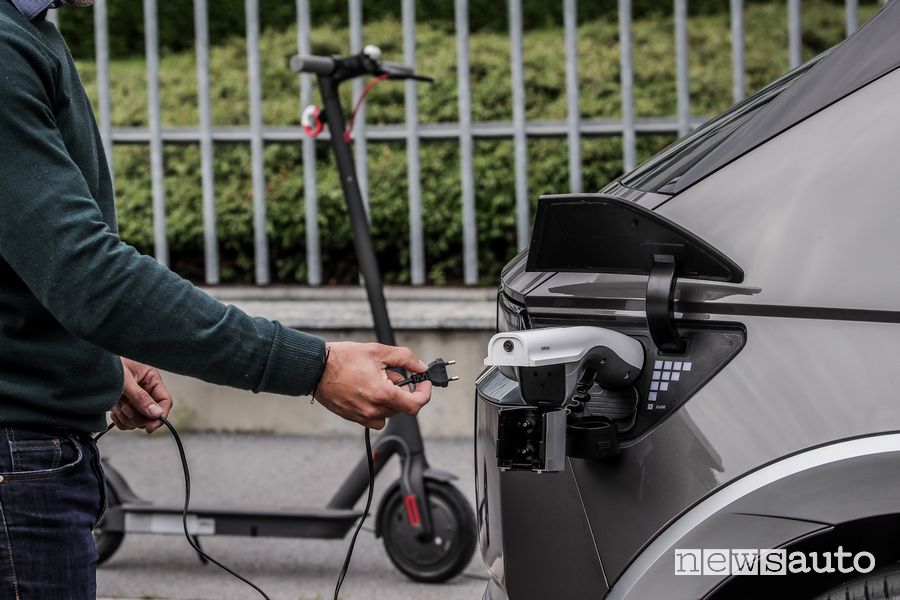
The electric car can be charged by connecting it to the domestic system (commonly with a meter). 3.5 kW) through a Schuko socket. The times are very long and with difficulty you will be able to charge the battery to 100%. To avoid interference and meter disconnection, energy drops or blackoutsthe best solution is to exploit the Night. Using a 10 Ampére (2.3 kW) charger it takes you 10 hours to deliver 23 kWh, i.e. you fill up a Renault Zoe Q210 with a 22 kWh battery.
What is the alternative? To charge your electric car more quickly at home, it is recommended installing a wallbox in the garage.
TYPE of connectors for AC electric car charging
This also allows you to use the following industrial connectors for charging the electric car in 230 Volts alternating current.
- Type 1: single phase which manages a maximum of 32A and 230V reaching up to 7.4 kW;
- Type 2: single/three-phase which manages a maximum of 32/70A at approximately 230/400V. In this case a maximum power of 43 kW as on Renault Zoe. This is by far the most widespread because it manages single-phase and three-phase thanks to the use of 7 poles, of which they are Phase 1, Phase 2, Phase 3, neutral, earth and two connectors which allow you to read the maximum power allowed by the system with which the car can recharge.
- Type 3C: single/three-phase for maximum 32/62A and 230/400 Volt. The maximum power is 22 kW;
- Type 3A: single-phase for maximum 16A and 230V, dedicated to light vehicles (maximum power 3.7 kW).
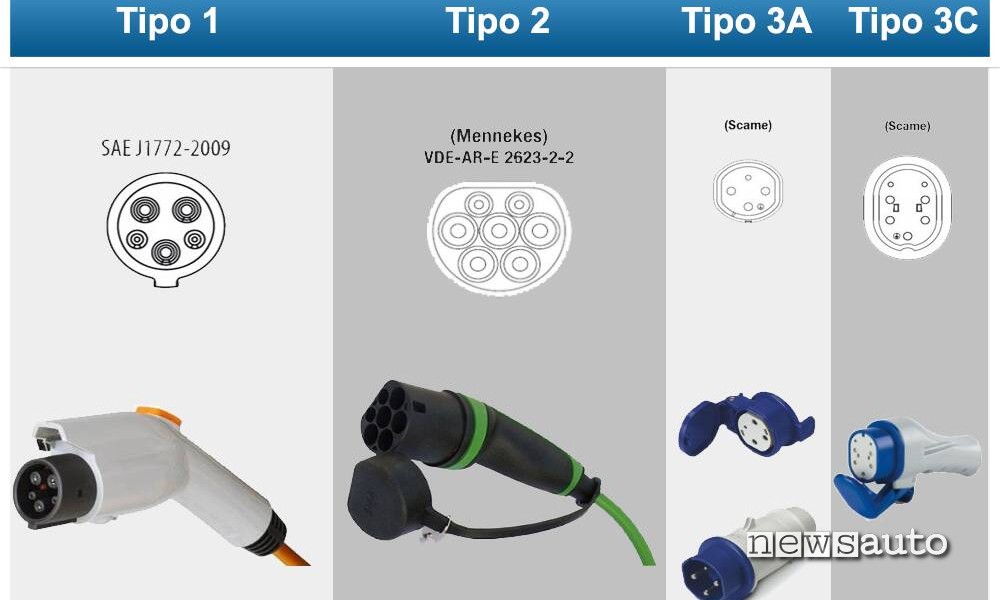
Continuous current DC charging
DC charging meaning: DC current stands for Continuous electric current (or DC – Direct Current), i.e. direct current. A 12V car battery, for example, delivers direct current. Charging electric cars when the current reaches the battery it always happens in CC and, compared to the AC type, it differs in the amount of electricity fed into the device and the charging time.
Connectors for charging electric cars in DC direct current
Charging the car with DC current certainly means charging it more quickly, shortening charging times but also incurring a greater cost for electricity which is up to 3 times higher than a home AC charging.
To charge the electric car in DC, direct current, there are two types of connectors that refer to 2 different standards, CCS Combo 2 and CHAdeMO.
The standard CCS (Combined Charging System) Combo 2 consists of a connector charging on the vehicle electric for the recharge fast direct current (DC).
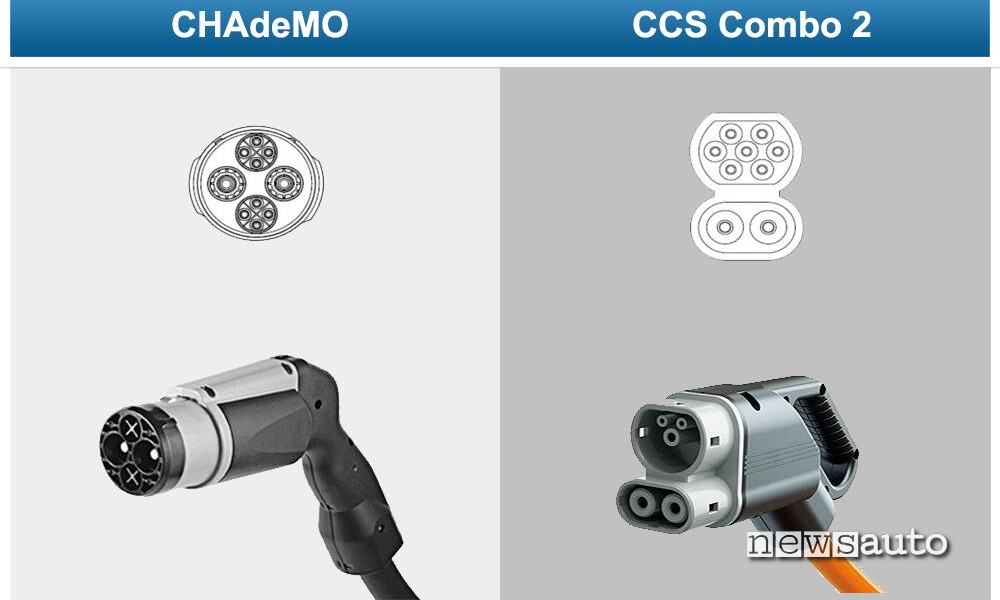
- CHAdeMO: the name of the association “CHAdeMO” is formed by the contraction of the words “CHArge de MOve”, or “charge for moving” (a charge for moving), and plays on the assonance with the Japanese phrase “O cha demo ikaga desuka – お茶でもいかがですか”, which means “Shall we have some tea while we recharge?”. This type is the standard for fast direct current charging initially most widespread in Asia and America and is used for example on vehicles produced by oriental manufacturers such as Nissan and Mitsubishi. He has one charging power starting from 50kW.
- CCS COMBO 1 And CCS COMBO 2: used mainly by European brands such as Volkswagen and BMW, it allows fast charging in direct current, but also slow charging in alternating current at a power of over 100 kW up to 350 kW of Fast Charger columns.
Charging type, Mode 1, Mode 2, Mode 3, Mode 4
The terms “Mode 1”, “Mode 2”, “Mode 3” and “Mode 4” are often used to describe different types of charging for electric vehicles. Below is a brief description of each of them:
- Way 1: Mode 1 refers to basic charging without integrated protection devices. Typically, it uses a standard household outlet without any modifications or additional devices. This method is considered the least safe and is generally not recommended for charging electric vehicles due to the risk of overcharging or other safety issues.
- Way 2: Mode 2 is a form of home charging that involves the use of a two-pole charging cable equipped with an integrated electronic control device. This device monitors and regulates the charging current to ensure safe charging. Mode 2 usually requires a modified household socket or special adapter to connect the electric vehicle to the mains.
- Way 3: Mode 3 is considered the standard method for charging electric vehicles in residential or public settings. It uses a dedicated charging station, commonly called a wallbox, connected to a stable electrical network and equipped with integrated protection devices. Mode 3 provides faster and safer charging than previous methods and is commonly used in domestic installations and public infrastructure.
- Way 4: Mode 4 refers to high-power charging, usually used in public infrastructure or fast charging stations. It requires specialized and specific equipment, such as high-power direct current (DC) charging stations. Mode 4 can provide very fast charging, allowing an electric vehicle battery to be recharged in less time than slower charging methods.
Systems for charging electric cars, from “slow” to “ultra-fast”
As we have learned, they exist different models of charging connectors for electric cars that cover a wide range of needs: from the typical ones suitable for a family context, to those most suitable for companies with active commercial establishments. The connectors are found in different electric car columns, each of a different type and power.
There are over 200 devices (listed by Arera) for charging electric cars which cover a wide range of charging powers, from a minimum of 2 kW up to a maximum of 350 kW and are classified into 4 different models of electric car charging stations:
→ “Slow” (slow): charging devices up to 7.4 kW in B.C;
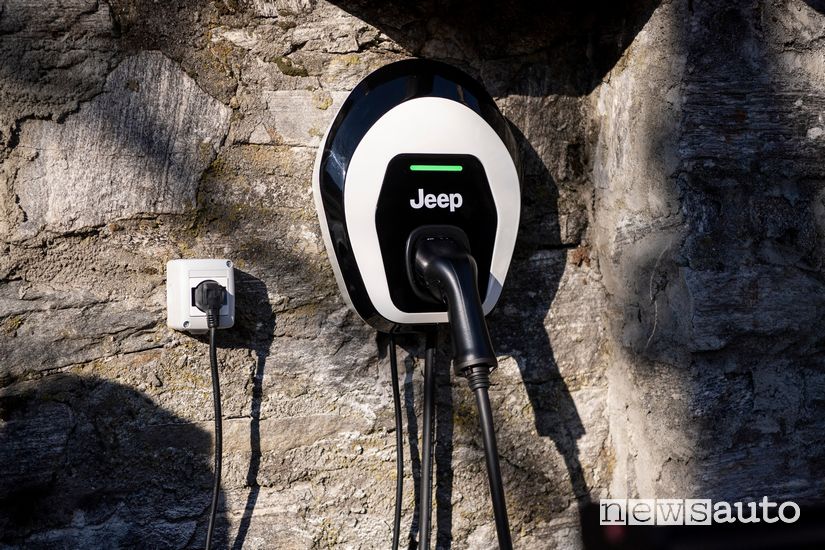
→ “Quick” (fast): charging devices up to 22 kW in B.C three-phase
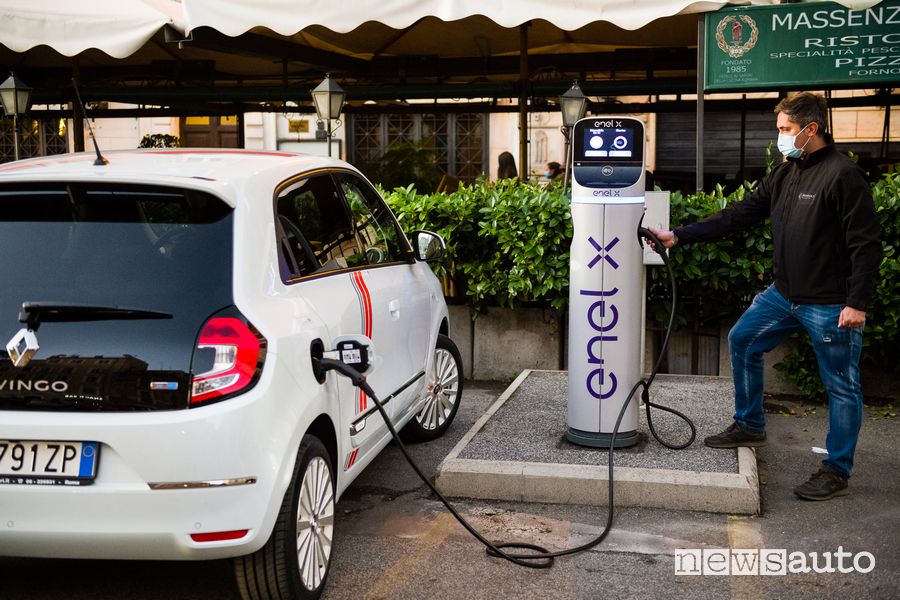
→ “Fast” (fast): charging devices up to 50 kW in DC and 43 kW in three-phase AC
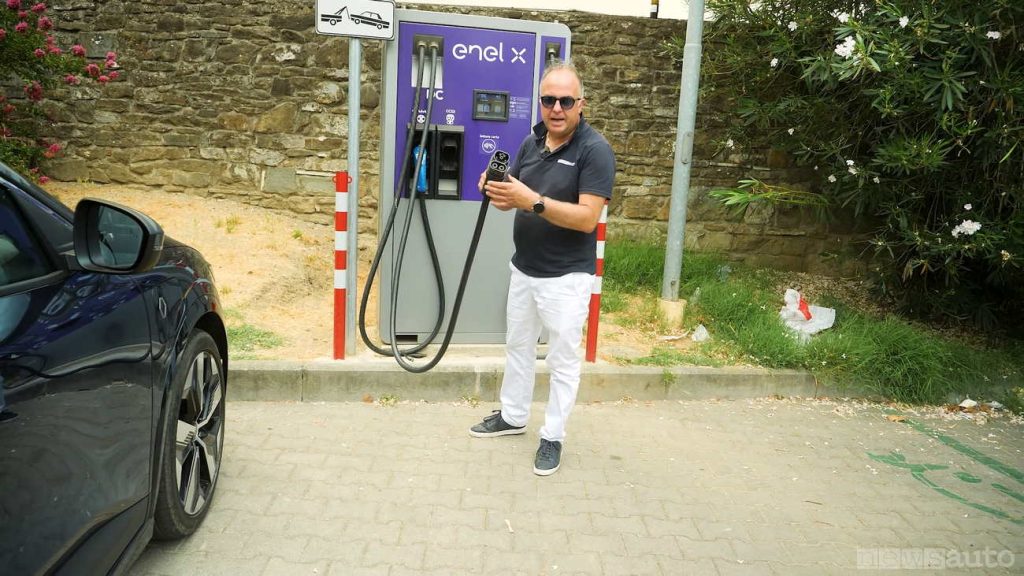
→ “Ultra-fast” (ultra-fast): charging devices over 50kW in DC

→ “Hypercharger”: charging devices over 200 kW in DC like Tesla superchargers or Enel X hyperchargers.
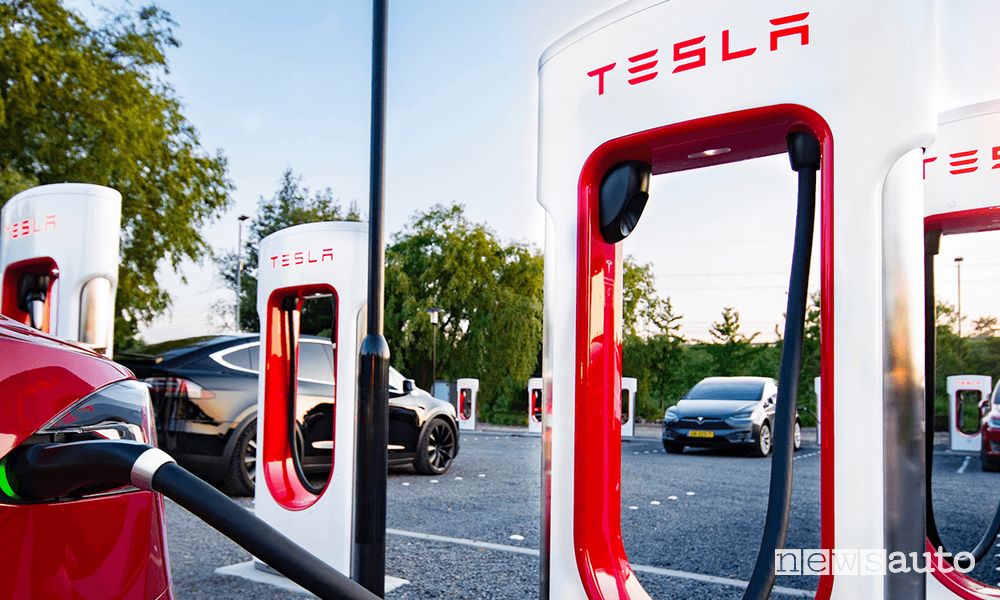
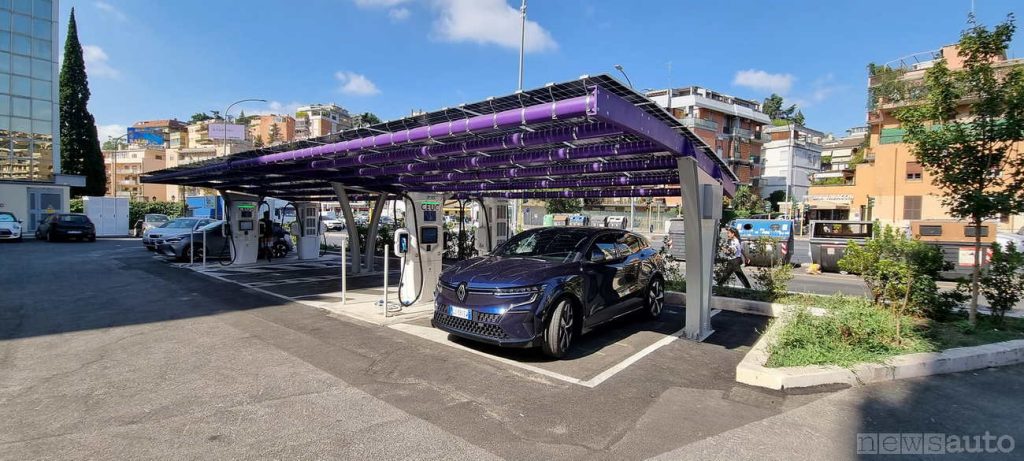
You might also be interested in this content
→ Electricity cost, updated current prices
→ Portable charger for charging at home with 3 kW
→ How to recharge your electric car at home
→ Selected and tested electric cars to buy
→ Electric car prices and features
→ Hybrid car prices and features
→ Video tests of ELECTRIC CARS
Latest lithium ion battery news
Testing electric cars
→ EV Driving all about electric and hybrid cars
→ What do you think? Drop by FORUM And Google News all the car news
#Charging #columns #electric #cars #types #slow #fast